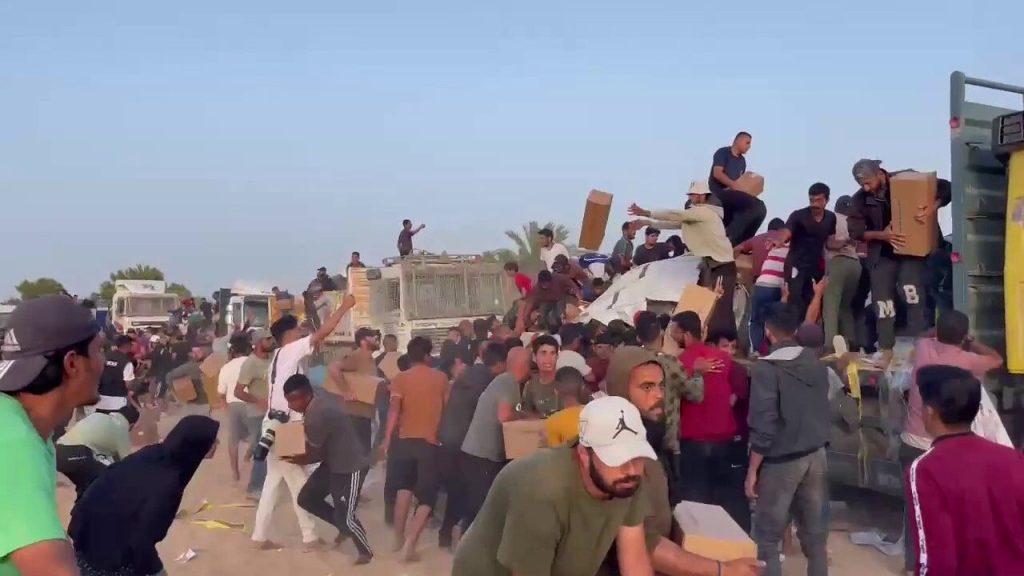In recent incidents in Gaza, Palestinians have swarmed and looted aid convoys, revealing the disorganized distribution of aid in the region. The U.S. has spent $350 million on constructing a pier in the Mediterranean Sea to facilitate aid delivery into Gaza. Although 569 metric tons of aid have been transferred through the pier, none of it has been delivered to Palestinians, according to the Pentagon. Maj. Gen. Pat Ryder confirmed the aid blockage and the transfer of aid but admitted that none had been delivered as of the moment.
A reporter questioned Ryder on whether none of the 569 metric tons had been delivered to the people of Gaza, to which Ryder mentioned air drops and aid facilitation but acknowledged that no aid had been delivered as of that day. Crowds, like the one seen in the May 18 footage, have been swarming aid caravans, preventing them from reaching certain areas. The U.N. spokesman Stephane Dujarric addressed the issue, stating that Palestinians resorted to self-distribution due to fear of not receiving aid, leading to the need for new aid routes to ensure aid reaches its final destination.
The growing controversy over Biden’s Gaza pier has fueled concerns over cost and security. The U.N.’s World Food Program is now considering new aid routes to ensure aid is delivered to its intended recipients. The situation highlights the challenges of aid distribution in Gaza and the need for a more organized and secure system to reach those in need. Despite efforts to transfer aid through the newly constructed pier, the aid has not reached Palestinians in Gaza, prompting discussions on how to improve the delivery process and prevent looting and disruption.
The aid blockage and looting incidents underscore the complex challenges of providing humanitarian assistance in Gaza. The U.S. investment in constructing the pier reflects a commitment to helping the people of Gaza, but without an effective distribution system, aid cannot reach those who need it most. The U.N.’s efforts to address the issue and find new aid routes demonstrate a recognition of the importance of ensuring aid reaches its intended recipients. The situation highlights the need for coordinated efforts and effective strategies to deliver aid in conflict-affected regions like Gaza.
The incident of Palestinians swarming and looting aid convoys reveals a desperate need for improved aid distribution systems in Gaza. The U.S. investment in a pier to facilitate aid delivery demonstrates a commitment to helping those in need, but challenges remain in ensuring aid reaches its intended recipients. The U.N.’s response to the situation and consideration of new aid routes reflect a recognition of the importance of effective aid distribution in conflict-affected areas. The need for organized and secure aid delivery systems is crucial in ensuring that humanitarian assistance reaches those who need it most in Gaza and other regions facing similar challenges.


